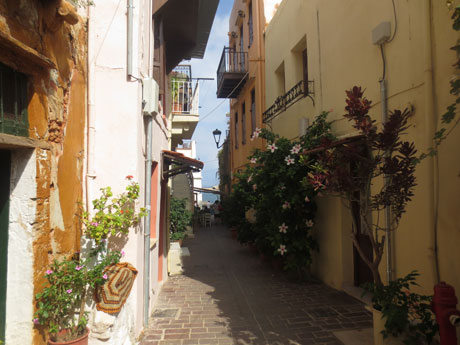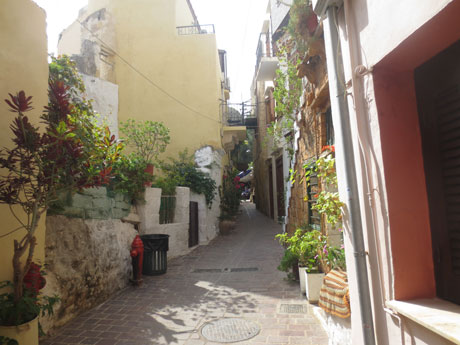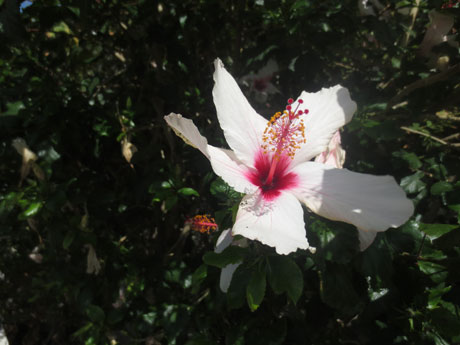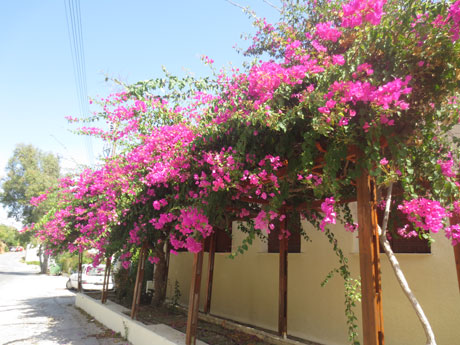Overview
This is a reimplementation of the javascript of Bootstrap using d3 instead of jQuery
It support all the data-api that bootstrap use :
data-dismiss="alert"data-dismiss="modal"data-toggle="modal"data-toggle="dropdown"data-toggle="tab"data-toggle="pill"data-toggle="collapse"data-toggle="popover"data-toggle="tooltip"data-toggle="button"data-slide="..."data-slide-to="..."data-ride="carousel"data-spy="affix"data-spy="scroll"data-parent="#..."data-target="#..."
There's also availble a small "extra" module that allow to create some bootstrap the "d3 way" and there's a limited support for adminLTE javascript too (only what I needed for my project)
Download
From gitHub
Follow the link, or :
$ git clone https://github.com/sebt3/d3-bootstrap.gitUsing composer
$ composer require sebt3/d3-bootstrap:dev-masterUsing a cdn
<script src="https://cdn.jsdelivr.net/gh/sebt3/d3-bootstrap@0.5.2/dist/d3-bootstrap-withextra.min.js"></script>Template
Here is a minimum template:
<!DOCTYPE html>
<html lang="en">
<head>
<meta charset="utf-8">
<meta http-equiv="X-UA-Compatible" content="IE=edge">
<meta name="viewport" content="width=device-width, initial-scale=1">
<!-- The above 3 meta tags *must* come first in the head; any other head content must come *after* these tags -->
<title>Bootstrap 101 Template</title>
<!-- Bootstrap -->
<link href="https://maxcdn.bootstrapcdn.com/bootstrap/3.3.7/css/bootstrap.min.css" rel="stylesheet">
</head>
<body>
<h1>Hello, world!</h1>
<!-- d3 -->
<script src="https://d3js.org/d3.v4.min.js"></script>
<!-- d3-bootstrap -->
<script src="https://cdn.jsdelivr.net/gh/sebt3/d3-bootstrap@0.5.2/dist/d3-bootstrap-withextra.min.js"></script>
</body>
</html>Alerts
Bootstrap use Javascript to allow you to close the "dismissible alerts".
The presence of the attribute data-dismiss="alert" select the button that will close the alert on click (it doesnt have to be a button actually)
<div class="alert alert-warning alert-dismissible" role="alert">
<button type="button" class="close" data-dismiss="alert" aria-label="Close"><span aria-hidden="true">×</span></button>
<strong>Warning!</strong> Better check yourself, you're not looking too good.
</div>will produce :
Add the classes "in fade" to the alert to add a nice fading effect :
Custom events
All alert events are fired on the alert itself (i.e. at the <div class="alert">)
| Event Type | Description |
|---|---|
| close.bs.alert | This event fires immediately when the close instance method is called. |
| closed.bs.alert | This event is fired when the alert has been closed (will wait for CSS transitions to complete). |
d3.select('.alert.alert-warning.fade').on('closed.bs.alert', function () {
// do something…
})Collapses
Collapses are objects that can hide part of their content. It can go from the very simple example bellow to accordions.
The button (or link) that trigger the collapsed content have to be identified by the attribute data-toggle="collapse" and identify the target using data-target="#..." or href="#...".
<a class="btn btn-primary" role="button" data-toggle="collapse" href="#collapseExample" aria-expanded="false" aria-controls="collapseExample">
Link with href
</a>
<button class="btn btn-primary" type="button" data-toggle="collapse" data-target="#collapseExample" aria-expanded="false" aria-controls="collapseExample">
Button with data-target
</button>
<div class="collapse" id="collapseExample">
<div class="well">
...
</div>
</div>Custom events
| Event Type | Description |
|---|---|
| show.bs.collapse | This event fires immediately when the show instance method is called. |
| shown.bs.collapse | This event is fired when a collapse element has been made visible to the user (will wait for CSS transitions to complete). |
| hide.bs.collapse | This event is fired immediately when the hide method has been called. |
| hidden.bs.collapse | This event is fired when a collapse element has been hidden from the user (will wait for CSS transitions to complete). |
d3.select('#collapseExample').on('hidden.bs.collapse', function () {
// do something…
})
Panels
The same strategy can be used on many things. Panels are a good example :<div class="panel-group">
<div class="panel panel-default">
<div class="panel-heading">
<h4 class="panel-title">
<a data-toggle="#collapse1" href="#collapse1">
Collapsed list group
</a>
</h4>
</div>
<div id="collapse1" class="panel-collapse collapse">
<ul class="list-group">
<li class="list-group-item">One</li>
<li class="list-group-item">Two</li>
<li class="list-group-item">Three</li>
</ul>
<div class="panel-footer">Footer</div>
</div>
</div>
</div>
</div>- One
- Two
- Three
Accordions
And this is a demo of accordion. If you want to see it's code, go have a look in the bootstrap documentation.
Please note that accordions use an extra tag : data-parent="#..." to identify the accordion as a whole.
HTML stands for HyperText Markup Language. HTML is the main markup language for describing the structure of Web pages. Learn more.
Bootstrap is a powerful front-end framework for faster and easier web development. It is a collection of CSS and HTML conventions. Learn more.
CSS stands for Cascading Style Sheet. CSS allows you to specify various style properties for a given HTML element such as colors, backgrounds, fonts etc. Learn more.
Tabs
Tabs and pills work exactly the same way. Beside the class, you'll need to add the attribute data-toggle="tab" and a way to identify the target tab-content to open using either data-target="#..." or href="#...".
<ul class="nav nav-tabs">
<li role="presentation" class="active"><a data-toggle="tab" href="#home">Home</a></li>
<li role="presentation"><a data-toggle="tab" href="#menu1">Menu 1</a></li>
<li role="presentation"><a data-toggle="tab" href="#menu2">Menu 2</a></li>
</ul>
<div class="tab-content">
<div id="home" class="tab-pane fade in active">
<h3>Home</h3>
<p>Some content.</p>
</div>
<div id="menu1" class="tab-pane fade">
<h3>Menu 1</h3>
<p>Some content in menu 1.</p>
</div>
<div id="menu2" class="tab-pane fade">
<h3>Menu 2</h3>
<p>Some content in menu 2.</p>
</div>
</div>HOME
Some content.
Custom events
Event Type Description
show.bs.tab This event fires on tab show, but before the new tab has been shown.
shown.bs.tab This event fires on tab show after a tab has been shown.
hide.bs.tab This event fires when a new tab is to be shown (and thus the previous active tab is to be hidden).
hidden.bs.tab This event fires after a new tab is shown (and thus the previous active tab is hidden).
d3.select('a[data-toggle="tab"]').on('shown.bs.tab', function () {
this // displayed tab
})
Extra: Creating tabs
| Event Type | Description |
|---|---|
| show.bs.tab | This event fires on tab show, but before the new tab has been shown. |
| shown.bs.tab | This event fires on tab show after a tab has been shown. |
| hide.bs.tab | This event fires when a new tab is to be shown (and thus the previous active tab is to be hidden). |
| hidden.bs.tab | This event fires after a new tab is shown (and thus the previous active tab is hidden). |
d3.select('a[data-toggle="tab"]').on('shown.bs.tab', function () {
this // displayed tab
})Using the extra.js file, you have acces to functions to create tabs.
d3.select('#myContainer').call(bs.tabs()
.tab('Home', bs.mdViewer().src('# Home
Some contents.'))
.tab('Menu 1', bs.mdViewer().src('# Menu 1
Some content in menu 1.'))
.tab('Menu 2', bs.mdViewer().src('# Menu 2
Some content in menu 2.'))
);Tooltips
Bootstrap tooltips overwrite the default browser tooltips.
To activate the bootstrap tooltip on a link (or else), you need to add the attribute data-toggle="tooltip". The attribute title will be used as content (just like with regular tooltips). Optionnaly you can choose the placement using data-placement="left", value supported are : top, bottom, left, right.
<a href="#" data-toggle="tooltip" title="Hooray!" data-placement="left">this link has a tooltip on the left</a>Custom events
| Event Type | Description |
|---|---|
| show.bs.tooltip | This event fires immediately when the show instance method is called. |
| shown.bs.tooltip | This event is fired when the tooltip has been made visible to the user (will wait for CSS transitions to complete). |
| hide.bs.tooltip | This event is fired immediately when the hide instance method has been called. |
| hidden.bs.tooltip | This event is fired when the tooltip has finished being hidden from the user (will wait for CSS transitions to complete). |
| inserted.bs.tooltip | This event is fired after the show.bs.tooltip event when the tooltip template has been added to the DOM. |
d3.select('a[data-toggle="tooltip"]').on('hidden.bs.tooltip', function () {
// do something…
})Popovers
Popovers are a bit like tooltips but are activated on click. Thuss no link will be followed.
You need to add the attribute data-toggle="popover" to activate popovers. It also support the data-placement attribute. Additionnaly to the title, a popover body have to be declared in the attribute data-content="...".
<a href="#" data-toggle="popover" data-placement="right" title="Popover Header" data-content="<a href=/index.html>Some content</a> <b>inside</b> <i>the</i> popover">Toggle popover there -></a>Custom events
| Event Type | Description |
|---|---|
| show.bs.popover | This event fires immediately when the show instance method is called. |
| shown.bs.popover | This event is fired when the popover has been made visible to the user (will wait for CSS transitions to complete). |
| hide.bs.popover | This event is fired immediately when the hide instance method has been called. |
| hidden.bs.popover | This event is fired when the popover has finished being hidden from the user (will wait for CSS transitions to complete). |
| inserted.bs.popover | This event is fired after the show.bs.popover event when the popover template has been added to the DOM. |
d3.select('a[data-toggle="popover"]').on('show.bs.popover', function () {
// do something…
})Carousels
Carrousel behave just like with regular bootstrap.
Bellow is the example from W3schools
Custom events
| Event Type | Description |
|---|---|
| slide.bs.carousel | This event fires immediately when the slide instance method is invoked. |
| slid.bs.carousel | This event is fired when the carousel has completed its slide transition. |
d3.select('#myCarousel').on('slide.bs.carousel', function () {
// do something…
})Extra: Creating carousels
Using the extra.js file, you have acces to functions to create carousels.
d3.select('#myContainer').call(bs.carousel()
.pic('/path/to/img1.png', 'Alt for img1')
.pic('/path/to/img2.png', 'Alt for img2')
.pic('/path/to/img3.png', 'Alt for img3')
);Affix
Affix are object that keep on screen. The menu of this page is an affix. But unlike what you can usually do using plain css, affix can be fixed for only a portion of the document.
Affix are activated using the attribute data-spy="affix".
The most top position an affix can have is the position it is given initially. The most bottom allowed position to an affix can also be set using the attribute data-affix-end="#..." to identify a DOM element which position will be used as maximum.
The "affixed" element will be switched between these 3 classes : "affix-top", "affix" and "affix-bottom". Customize accordingly.
These are the elements within this document used for the affix :
<ul id="nav" data-spy="affix">
<!-- Affixed content -->
</ul>
...
<section data-affix-end="#nav">
<!-- item that mark the end of the affix position -->
</section>Custom events
Bootstrap's affix plugin exposes a few events for hooking into affix functionality.
| Event Type | Description |
|---|---|
| affix.bs.affix | This event fires immediately before the element has been affixed. |
| affixed.bs.affix | This event is fired after the element has been affixed. |
| affix-top.bs.affix | This event fires immediately before the element has been affixed-top. |
| affixed-top.bs.affix | This event is fired after the element has been affixed-top. |
| affix-bottom.bs.affix | This event fires immediately before the element has been affixed-bottom. |
| affixed-bottom.bs.affix | This event is fired after the element has been affixed-bottom. |
d3.select('[data-spy="affix"]').on('affix-top.bs.affix', function () {
// do something…
})ScrollSpy
Usually ScrollSpy are put inside an affix. This document is no exeption. A scrollSpy track the scroling position to identify what's on screen and activate (setting class="active") the menu item inside the scrollSpy.
d3-bootstrap add a scrolling effect on click on the nav items(using d3 transition).
Here is what's used within this document :
<body data-spy="scroll" data-target=".scrollspy">
...
<div class="col-md-3 scrollspy">
<ul id="nav">
<li><a href="#overview">Overview</a></li>
<li><a href="#download">Overview</a></li>
<li><a href="#template">Overview</a></li>
...
</ul>
</div>
...
<section id="#overview">
<h2> Overview</h2>
...
</section>
...
<section id="#download">
<h2> Download</h2>
...
</section>
...
<section id="#template">
<h2> Template</h2>
...
</section>
...Events
| Event Type | Description |
|---|---|
| activate.bs.scrollspy | This event fires whenever a new item becomes activated by the scrollspy. |
d3.select('.scrollspy a[href="#overview"]').on('activate.bs.scrollspy', function () {
// do something…
})Demo of the affix-end ability
A space filler to allow you see the "affix-bottom" position for this document affix.
Lorem ipsum dolor sit amet, consectetuer adipiscing elit. Aenean commodo ligula eget dolor. Aenean massa. Cum sociis natoque penatibus et magnis dis parturient montes, nascetur ridiculus mus. Donec quam felis, ultricies nec, pellentesque eu, pretium quis, sem. Nulla consequat massa quis enim. Donec pede justo, fringilla vel, aliquet nec, vulputate eget, arcu.



